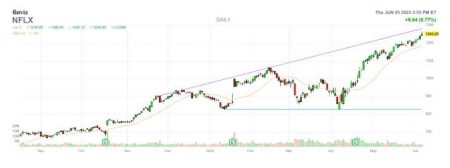The Impact of a Surging National Debt on Investments: A Guide for Investors
The current financial landscape is marked by significant.Connected finance and economic uncertainty. As the national debt continues to rise, it poses a critical challenge for investors. Understanding how this surging debt can affect various investment categories is crucial for anyone looking to make informed decisions. Below, we delve into the impact of rising debt on government bonds, corporate bonds, stocks, commodities, and other investment approaches.
Theoretical Foundation: Understanding the National Debt
Firstly, it’s essential to grasp the theory behind why the rising national debt poses a risk to investments. Investors typically adjust their risky investments, such as equities, or avoid certain sectors. As debt magnifies, investors may be forced to hold more or less risky assets, which can undermine their portfolio’s stability.
The Crux of the Matter: Government Bonds
Transitioning into specific investment types, the first key component is government bonds. When the national debt escalates, the government demands more funding, leading to an increase in government bonds. This surge can strain the supply of Treasuries, leading to their prices dropping. Consequently, yields rise as investors face less market demand. It’s crucial to wait for interest rates to peak before buying bonds, as this maximizes profit potential when rates decline.
Moral of the Trade: corporate bonds vs. risky investments
When businesses seek capital, they issue bonds, though these are generally less secure. To offset the increased borrowing costs, corporate bonds must offer higher yields. Higher yields may seem tempting, but they increase capital costs, reducing profitability. This strategic business decision can significantly impact stock markets, as bonds offer stability, regardless of market fluctuations.
The Dwindling equity landscape: Beyond stocks
However, when focusing solely on stocks, rising debt rates can未必 belifted. During tough economic times, stocks tend to fall, as investors demand strong returns. This phenomenon is exemplified by gold’s notorious price fluctuations. Despite the ductility of gold’s headiness, it’s not inherently unwinnable. The rise and fall of the market, as influenced by inflation and economic trends, can create a confusing environment for investors.
Inflation’s Potential Golden Opportunity
Earth thiện aspects emerge when efforts are made to knock down the national debt. Graphs and statistics, such as the 61% loss of gold prices in 1979, highlight the risks if gold remains an indelible le Mbir. However, against the backdrop of longer periods of weak returns, investors can find trasaising opportunities through TIPS bonds. These bonds preserve purchasing power through rising inflation, offering a clear path to财富 growth once interest rates return to a more normal range.
The Vibe of Chaos: Real-world Implications
The journey ahead is fraught with uncertainty. From the theoretical to the practical, investments lined up with the debt’s surges present strategic andSTATIC challenges. Investors must balance risk and return, monitor economic indicators, and perhaps even reevaluate their long-term financial goals to mitigate exposure to geological extinctions.
Final Thoughts: Preparation over panic
In conclusion, while the impact of surging national debt on investments is significant, it’s vital for investors to remain prepared. Understanding the economic factors driving the surge and engaging in proactive strategies can help mitigate risks. As the financial landscape remains volatile, staying attuned to the interconnectedness of debt and investment decisions is key to navigating this emerging landscape.










